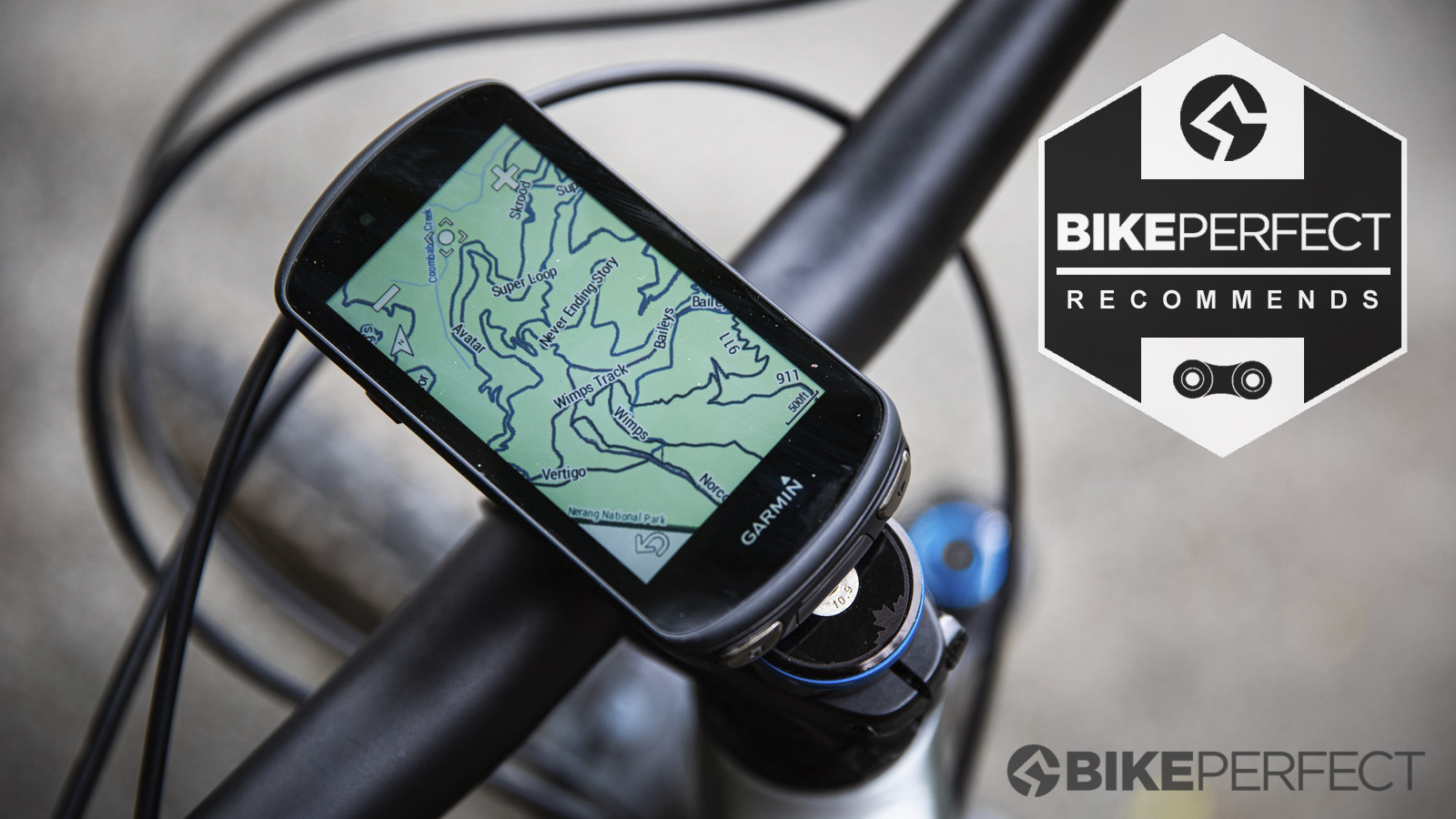Bike Perfect Verdict
The Edge 1030 Plus is Garmin's most powerful head unit yet, but the large screen and feature set don't quite outweigh the price tag
Pros
- +
Huge full-color screen
- +
MTB dynamics and Trail Forks integration
- +
Every metric you could ever want to track
- +
Battery life
Cons
- -
Extremely expensive
- -
Incident detection still terrible
Why trust BikePerfect
No longer tied to the domain of the old-fashioned analog 'Cyclometer', the best MTB GPS computers have come a long way over the years. They're not just for roadies and Lycra-wearing XC whippets anymore. While mountain bikers may not use the feature set in quite the same way as our tarmac-loving peers, they track so many metrics, inducing some useful off-road-specific data points. Not only can these be used to keep an account of your rides, but also to help improve your fitness and riding skills.
We’ve had a Garmin Edge 1030 Plus attached to the front end of a trail bike for the past few months, and we've been putting it to the test to see how well it performs off-road. It’s Garmin’s most expensive, largest, and fully featured head unit, but does it rank among the best computers for mountain biking, or is it overkill?
Design and aesthetics
From the outside, the Edge 1030 and the Edge 1030 Plus are almost exactly the same, barring two key cosmetic differences. The most obvious change is the color, with the 1030 Plus having swapped from white accents to all black everything. The second slightly less noticeable change is the omission of the micro SD card slot on the back. Garmin has upped the internal memory to 32GB, so it’s no longer needed.
The 1030 Plus is Garmin’s flagship cycling head unit, and also the largest in its range. Measuring 4.5 x 2.3 x 0.08in / 58 x 114 x 19mm it has a 3.5in color touchscreen and weighs 126g. With the size of the screen, you can pack in tons of metrics or use colorful graphic data files that take up a heap of screen real estate.
Though most of the functions are taken care of via taps and swipes, there are still three buttons on the computer: the lap and start button are along the bottom edge along with the USB charging port, while the power button is situated along the left side.
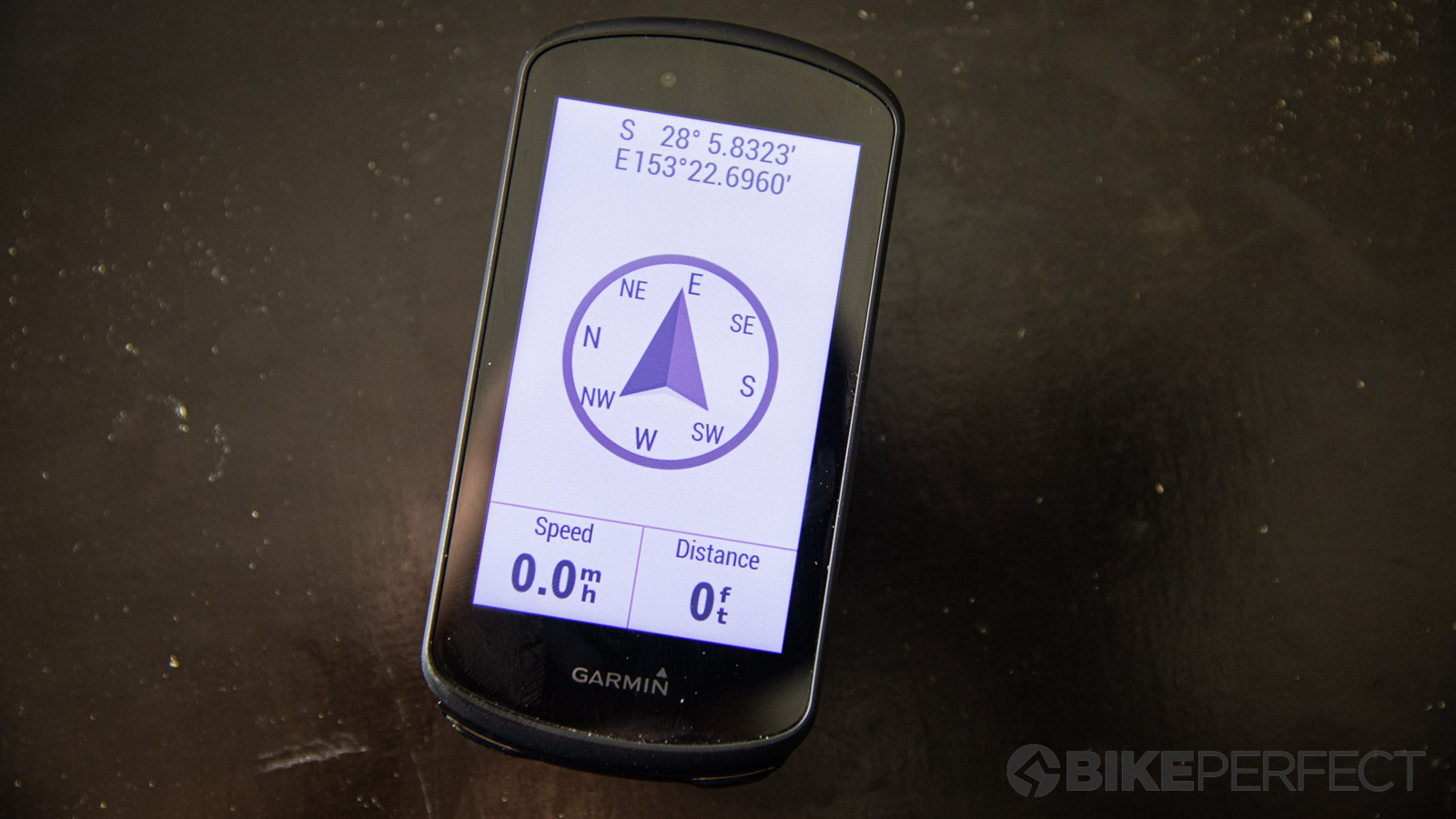
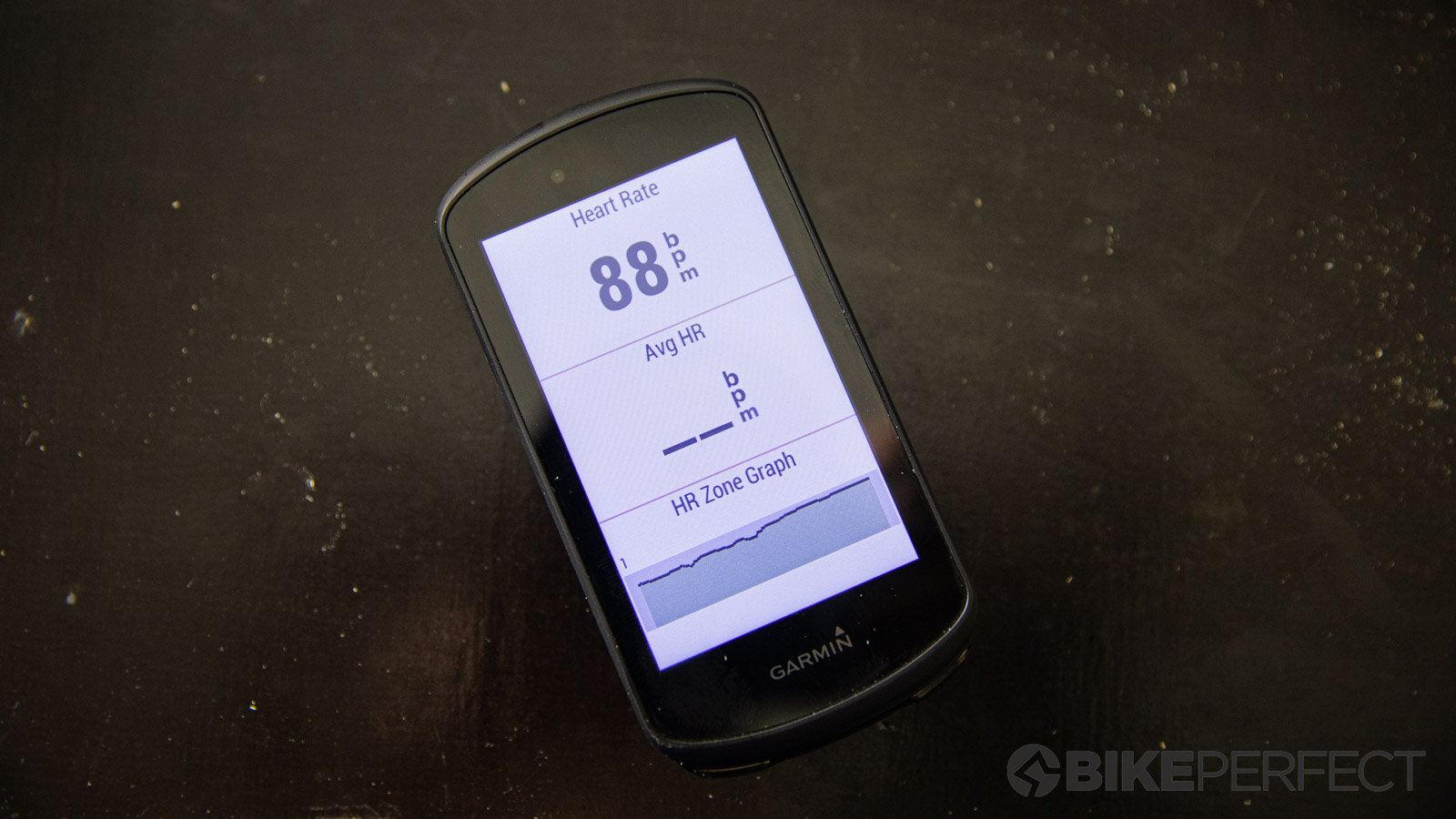
Externally it’s a smart-looking and well-finished unit, but just under the surface is where the Edge 1030 Plus gains all of its horsepower. It can access GPS, Glonass, and Galileo satellite networks, speaking the language of both ANT+ and Bluetooth sensors. It can also use Bluetooth to connect to your phone to display push notifications, run software updates, and of course, automatically sync rides – the latter can also be achieved via WiFi.
The 1030 Plus allows you to define multiple activity profiles and remembers not only the different data fields you may want on your gravel bike or MTB, but also which sensors are available, so it doesn’t waste battery power searching for something that’s not there. The Edge 1030 can even connect to e-MTBs and electronic drivetrains and will give you battery info and allow you to adjust the level of assistance directly from the screen.
While the SD card slot has disappeared on the back, you’ll find the traditional Garmin quarter-turn mount, which has five contacts so it can be used with the Garmin Charge Power Bank, said to increase double the battery life. Without the backup power, the 1030 Plus is claimed to last 24-hours in regular mode, or up to 48 in the extreme power saver mode. In practice, with a heart rate monitor connected, and occasionally a power meter, depending on the bike I was riding and the screen on auto-brightness, this was more or less bang on the money. When following a course with turn-by-turn directions I was getting closer to 20-hours of riding between charges.
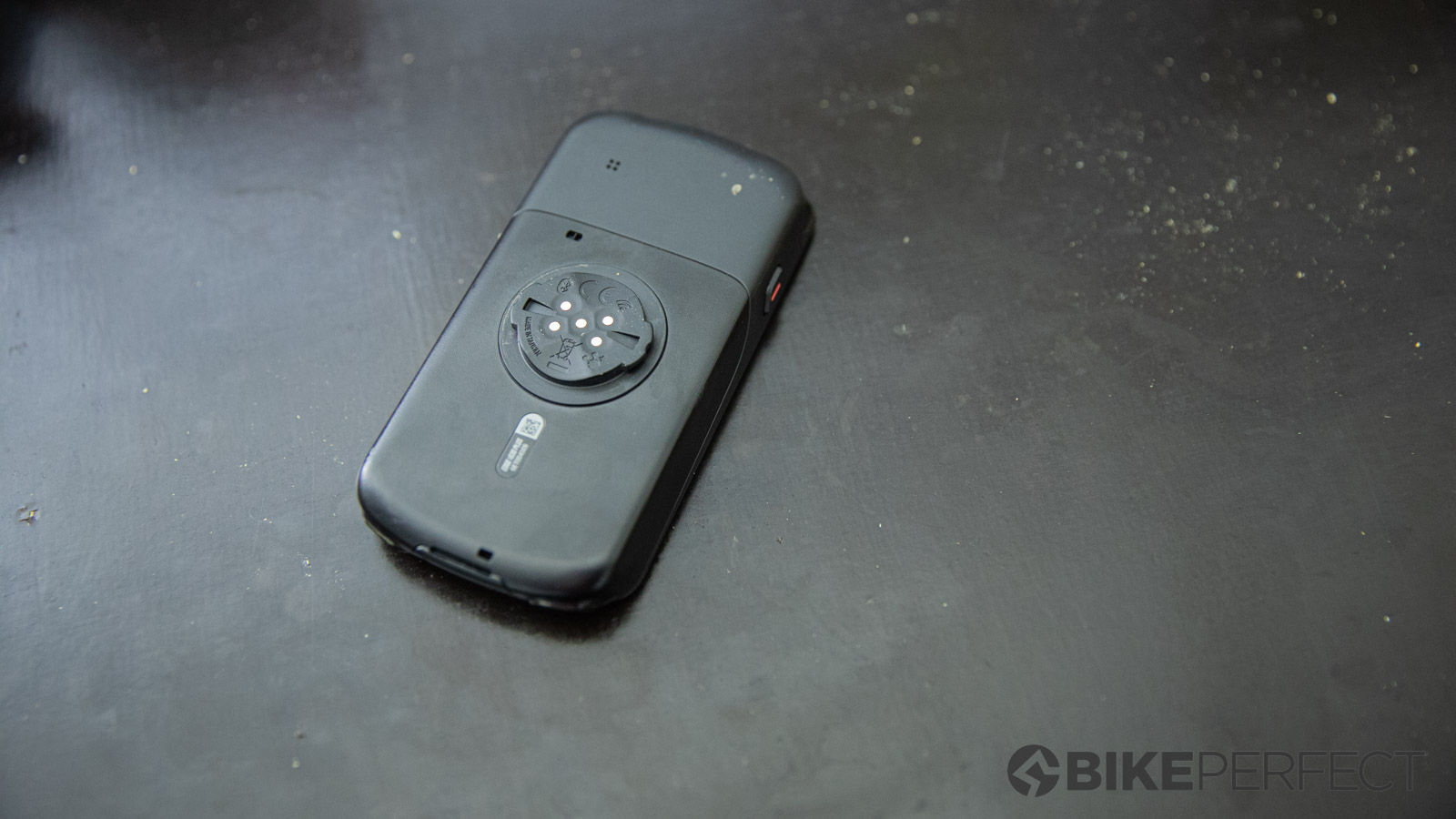
Peformance
Before we get to the ride itself, first, we need to discuss the setup process as Garmin has streamlined it if you are upgrading from another Edge computer. During the setup process through Garmin Connect, it will port over all your metrics, activity profiles, connect IQ apps and sensors over to the new computer so you can hit start and go – no button pushing/screen swiping marathons needed. If you already have a Garmin computer this is great, but if you don’t it’s not much use, and getting your data screens set up still isn’t as streamlined as Wahoo’s, which is done through the phone app.
With all-new internals, the Garmin Edge 1030 Plus is faster than its predecessor in every way. It starts up faster, it picks up GPS and external sensors more quickly, loads routes faster, and populates the map screen faster as you zoom and scroll around. The screen is vastly more responsive, too, especially with full finger gloves on; gone are the days of needing to swipe the screen three times or tap menu items more than once to execute specific actions.
While the screen is the largest Garmin offers, it’s not the brightest, with that accolade going to the smaller Edge 830.
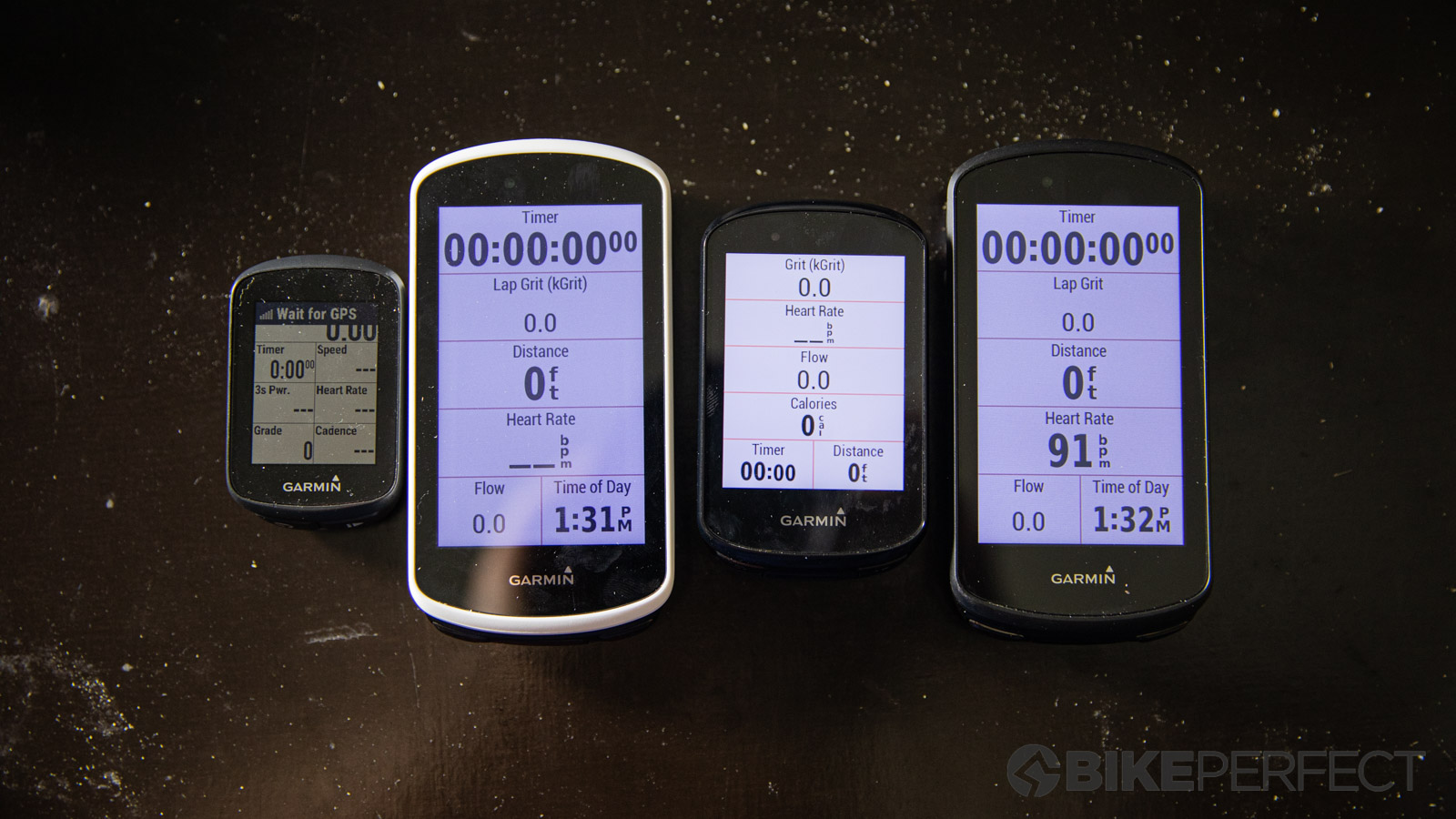
Since 1030 is a top-spec head unit, it tracks essentially every metric known to man, from the basics of speed, time, distance, ascent, descent, etc., to power metrics like three-second power, normalized power, and TSS. If you’re doing intervals, you can sync workouts from third-party apps like Training Peaks or TrainerRoad, or the computer will even recommend something for you, though they are pretty general.
However, most intriguing to us, the 1030 Plus tracks some MTB-specific dynamics, what turned out to be the most intriguing element of the 1030 Plus were the MTB, namely grit, flow, and air time. When Garmin initially announced the MTB metrics, I will admit I wrote them off as marketing fluff, however, I will happily eat crow as I’ve found them surprisingly useful – except for air time, which is solely for bragging rights.
Flow has probably been the metric I’ve found the most use for over the past few months. Using the built-in gyroscope and accelerometers, it quite literally tracks how well you roll through the terrain taking in to account ascent, descent, bike angle, and speed – essentially whether you pinned that corner or came in too hot and had to grab a handful of brake before the exit.
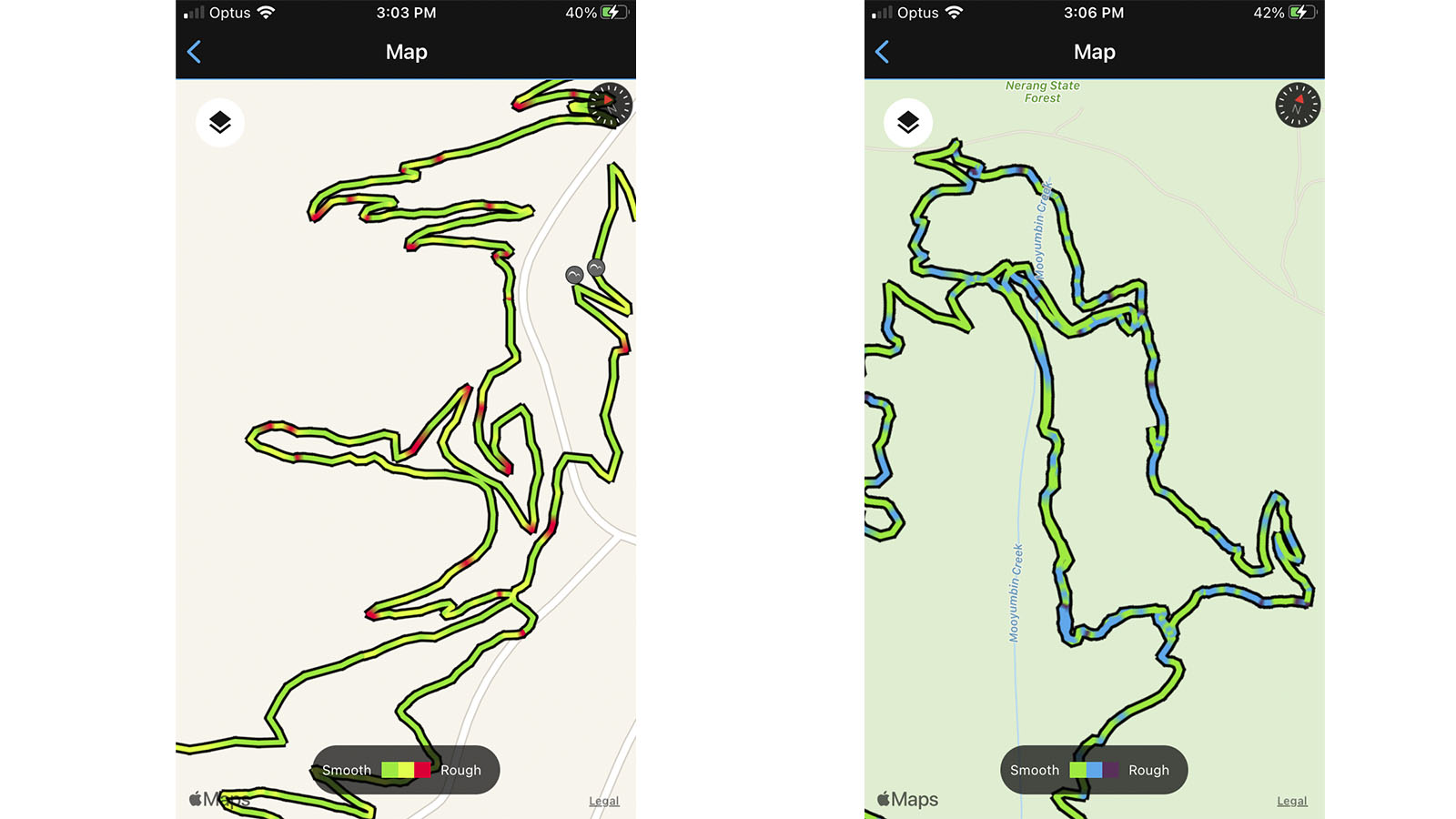
Over the past few months, I’ve developed a few bad cornering habits. These are ultimately what amounts to lazy riding, and minor changes (i.e. focusing on proper technique) can vastly improve the speed at which you can maintain grip through a corner. Realizing this, I have made a conscious effort to work on one thing, particularly each ride, whether that be body-bike separation, keeping my head up, not braking during the corner, and staying dynamic on the bike.
With whatever I was working on that day, I can then go back and look at seeing which trail features are still giving me trouble so I can go back and work on them. If you remember to hit the lap button, this is especially useful as you can watch whether you maintain your flow as fatigue builds, both live and after the fact. For me, this served as a decent reminder of when I needed to eat as my flow score would drop because as I get tired, I fall back into bad habits.
Grit attempts to quantify the difficulty of a ride. Unlike road or gravel where feet climbed, average and distance can offer a pretty good indication of the difficulty of a ride, 1000ft of climbing on a smooth manicured climbing trail and 1000ft of climbing up janky technical singletrack are two completely different animals — even if they have the same gradients. Grit quantifies this difference and would assign different scores to each. This gives you a way to quantify the difference in exertion between rides. This feature will be handy for XC and CX racers comparing courses.
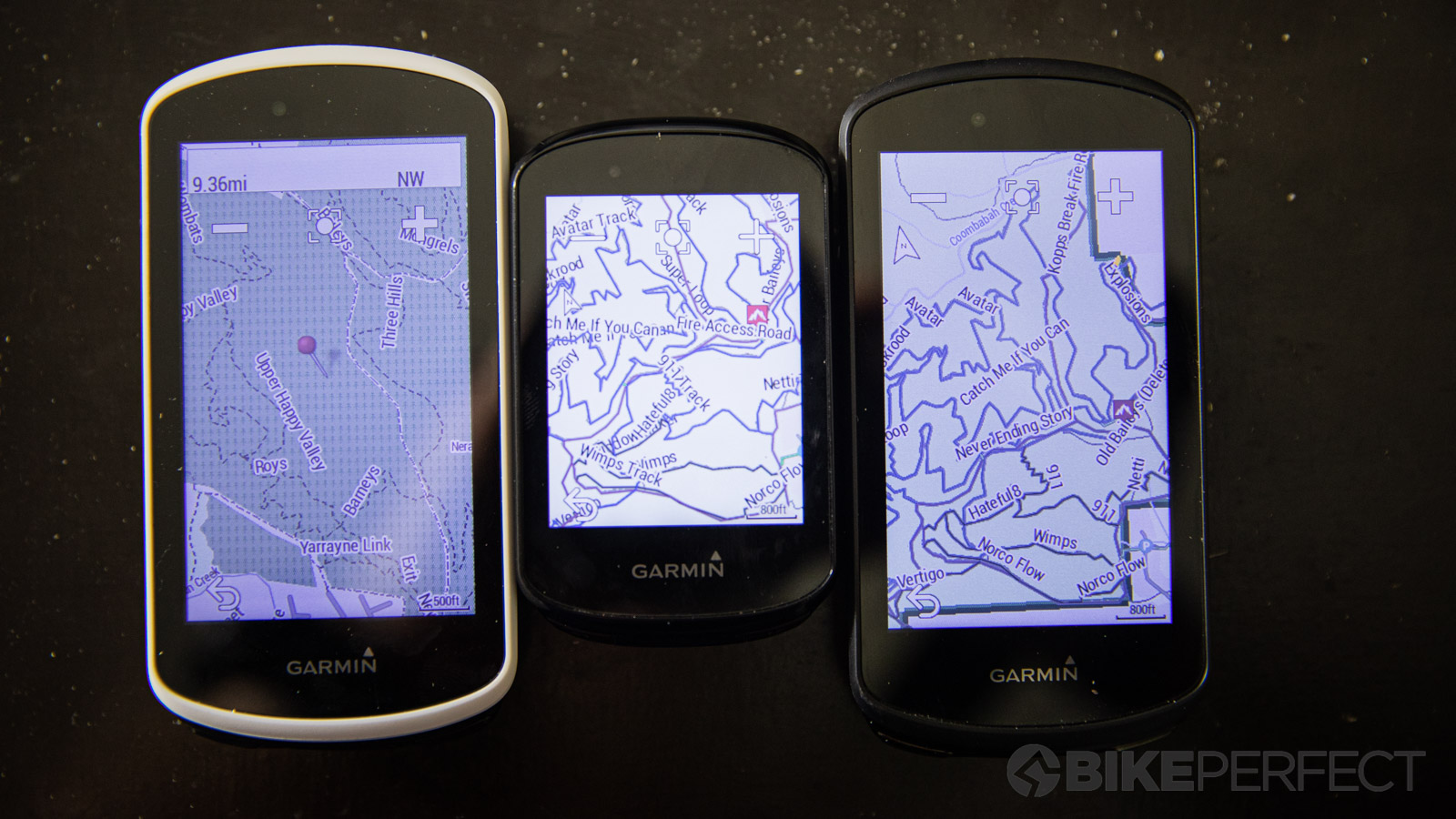
On the road, Garmin is head and shoulders above the rest when it comes to mapping and navigation, and with Trail Forks integration, that still rings true off-road. Gone are the days of stopping and pulling out your phone to figure out where you made a wrong turn or if there is a shortcut so you can hit the jump line again because it’s already on your head unit. The 1030 Plus also has what Garmin calls Fork Sight, so when you stop on the trail, it automatically swaps over the mapping page so you can figure out your location.
The Trail Forks maps don’t replace the standard Garmin Maps, but instead, augment them. For example, if you’re on a riding trip and want to make a route from your accommodation and then ride a specific path through the trail network, the 1030 Plus will provide you turn-by-turn directions the entire way. Courses can be synced directly from the Trail Forks app or website automatically without the need for a USB cable. At the time of writing, Trail Forks features integrated into Garmin Basemaps will remain unaffected by the status of your subscription to the app.
If you’re following a pre-planned route, when you approach a sustained climb, the computer will automatically bring up the Climb Pro screen, which essentially shows you a live elevation profile that’s color-coded based on the gradient to convey how much each section will hurt. If you’re riding in unfamiliar terrain, this serves as a fantastic heads-up display so that you don’t blow up just short of a false summit and then have to suffer the rest of the way up.
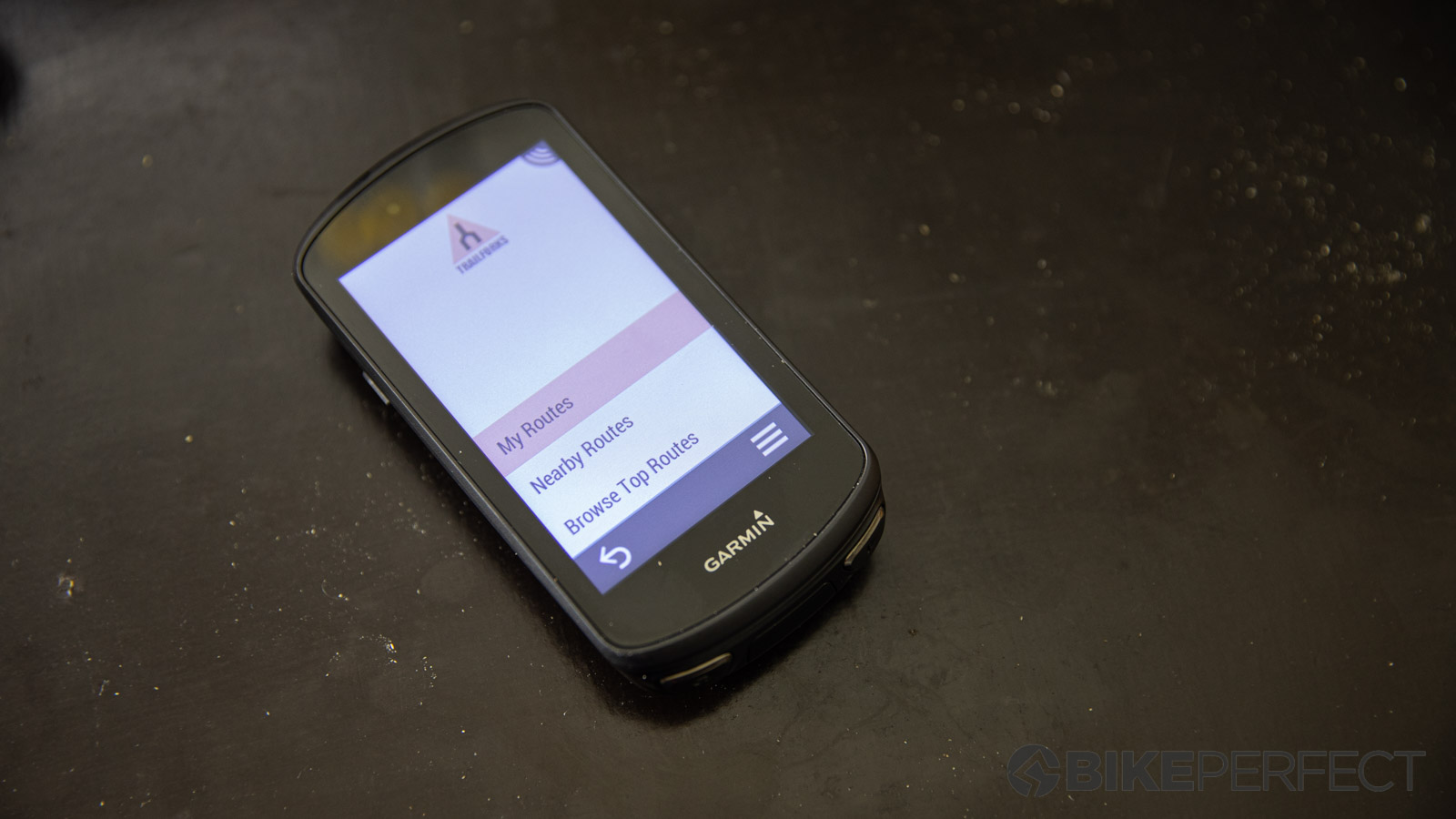
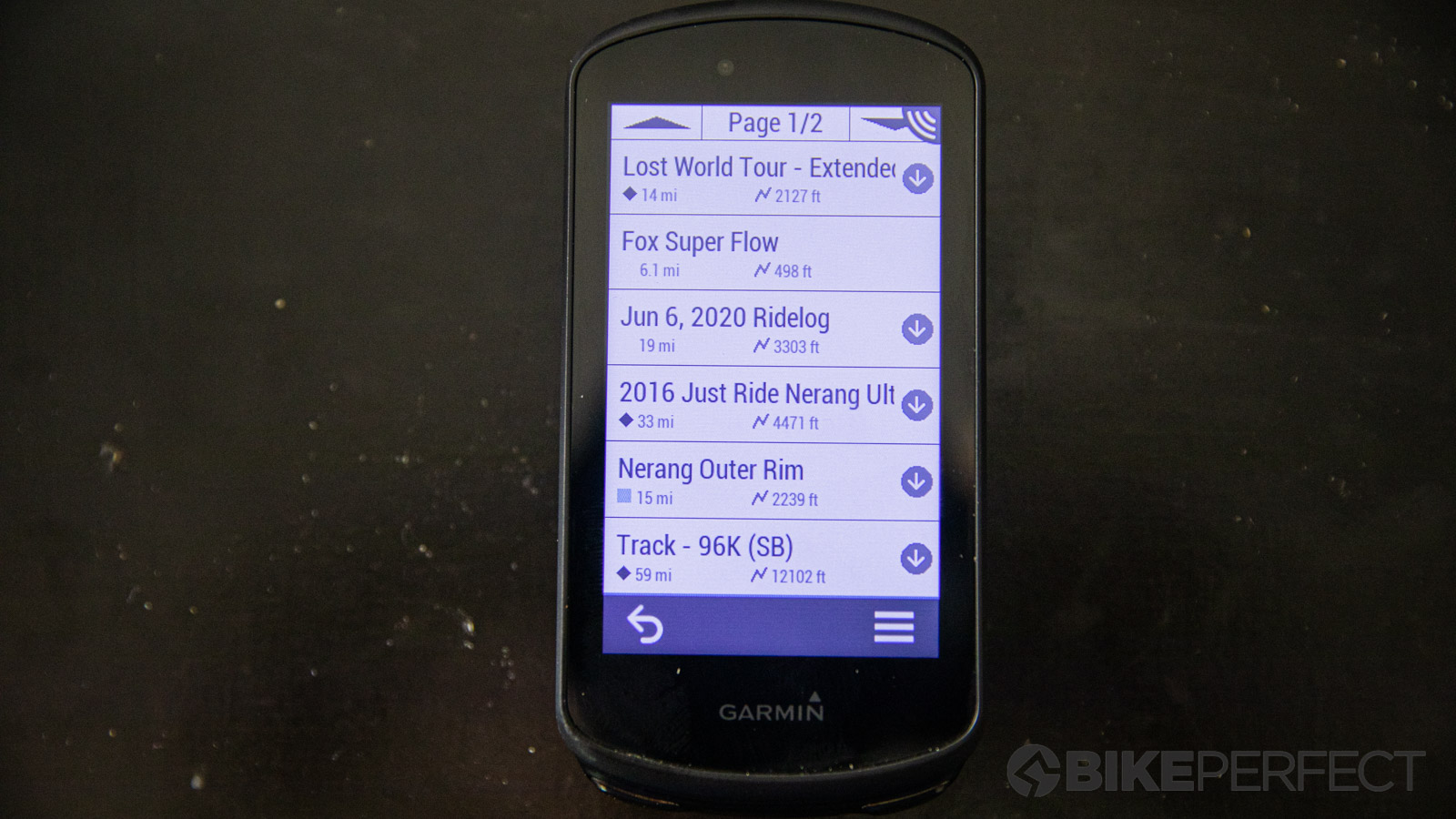
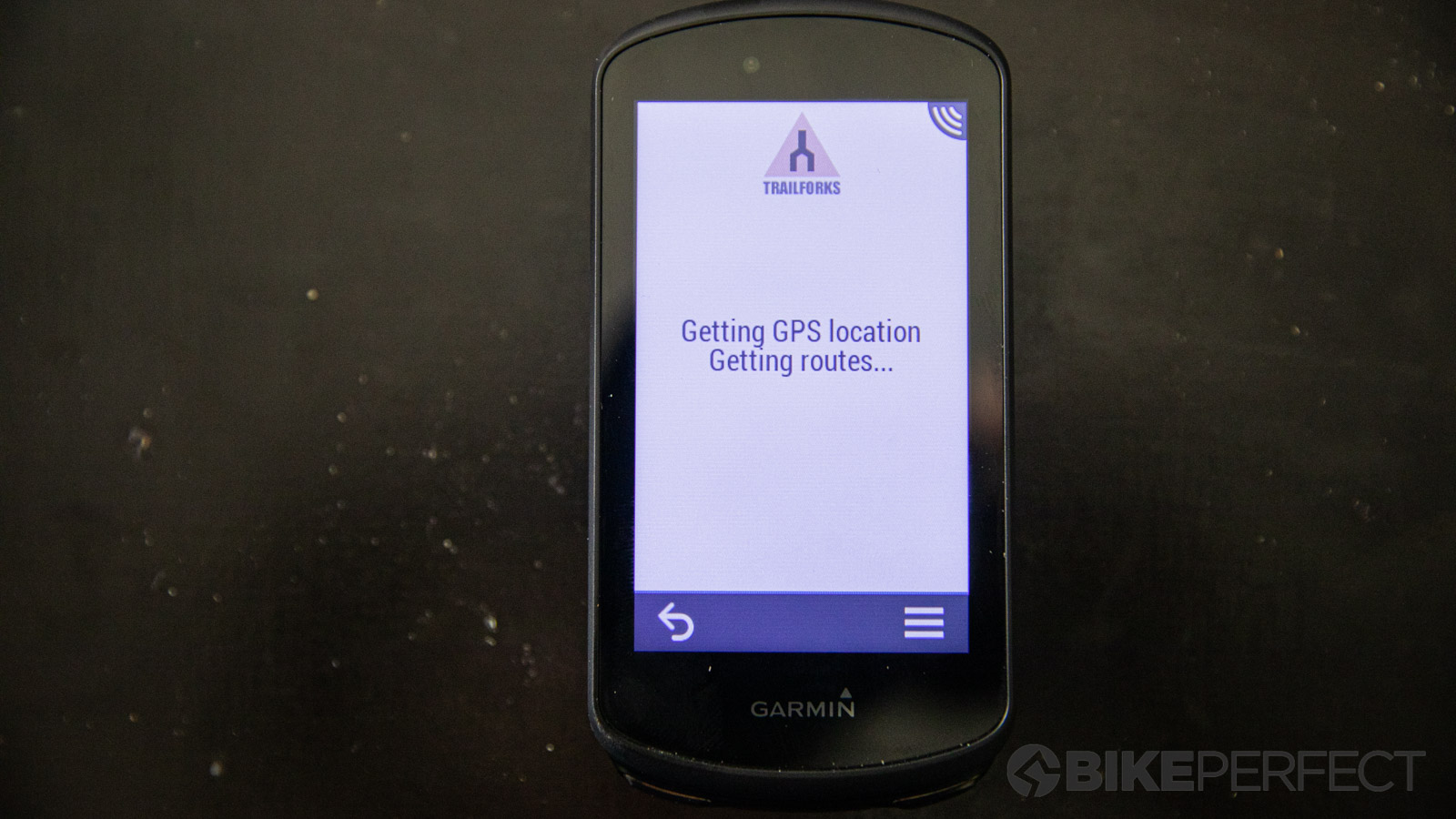
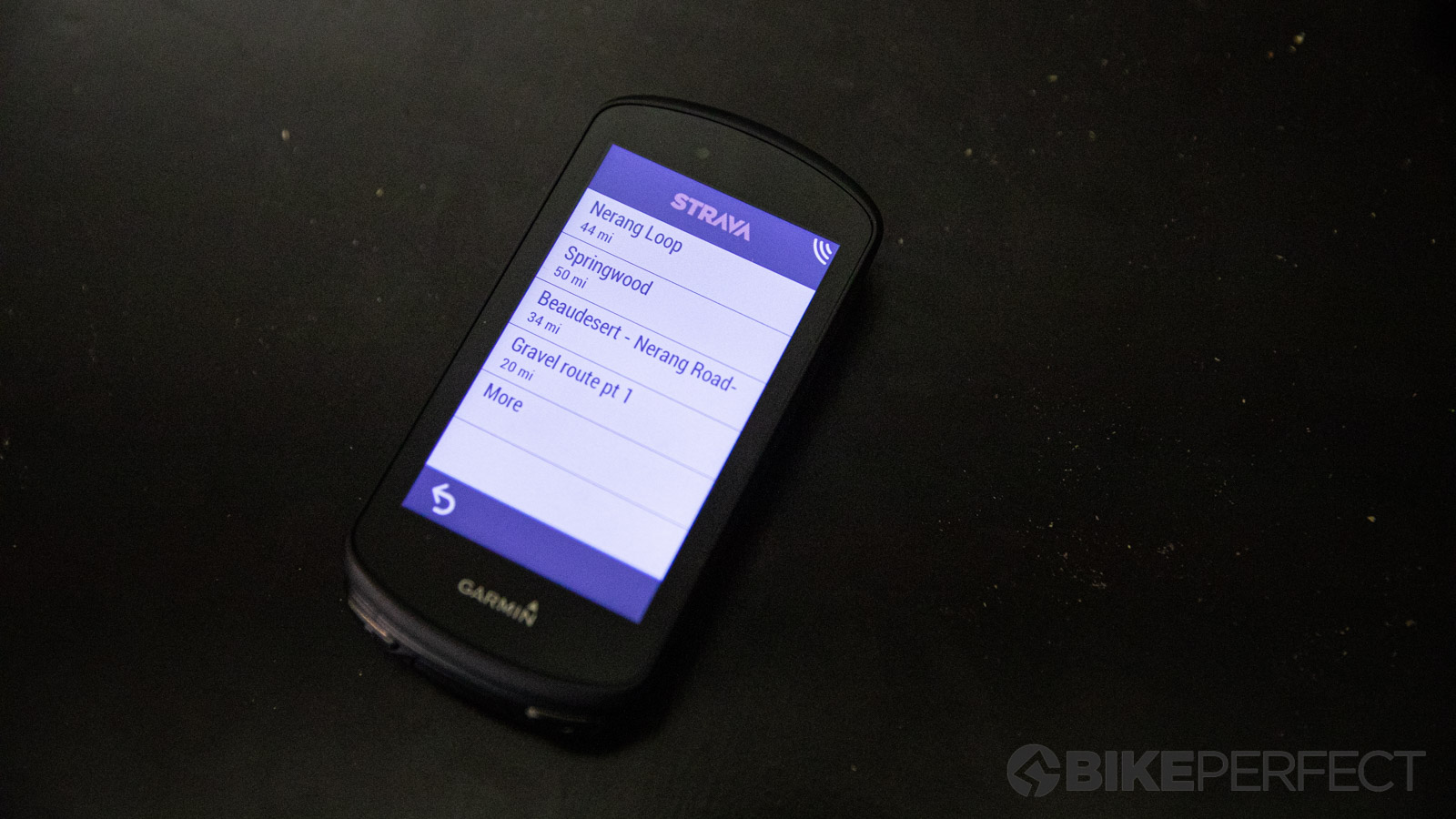
It’s here where the 1030 Plus comes into its own as the large screen allows enough detail to successfully navigate complicated trail junctions without having to do four u-turns because you went down the wrong trail. You still have to take your eyes off the trail to read the map, but at least with the Edge 1030 Plus, you can make it big and readable at a glance.
However, this size is a double-edged (pun intended) sword, and this computer is quite large, and form factor is an ever-present issue on MTB cockpits. With the short chunky stems of today, there is simply not enough surface area for the Edge 1030 Plus, or even compact units like the 130 Plus. Where you can get away with mounting something smaller like a Wahoo Elemnt Bolt or an Edge 830/530 directly to your bars, the 1030 Plus is susceptible to knee nocks, and continually varying angles depending on the roughness of the trail. Ultimately the best solution is a top cap or steerer tube mount like the blue one I use from K-Edge or using the o-ring mounts on the top tube to keep it out of harm’s way. Regardless of where it’s mounted, should your bike go cartwheeling down a steep descent, with the rubber side no longer down, it is liable to damage, and I’ve seen a few people crack screens this way.
The other area where Garmin has wholly whiffed with the Edge 1030 is incident detection. The trail network I nip out to for an hour before work in the morning has a fire road liaison between sections of singletrack that sends you through a rough, and janky high-speed grade reversal through a gully. It’s the type that you come into at a gazillion miles an hour and g-out your suspension in the compression in the hopes of carrying enough speed up the wall on the opposite side that you can just winch over the top in the granny gear.
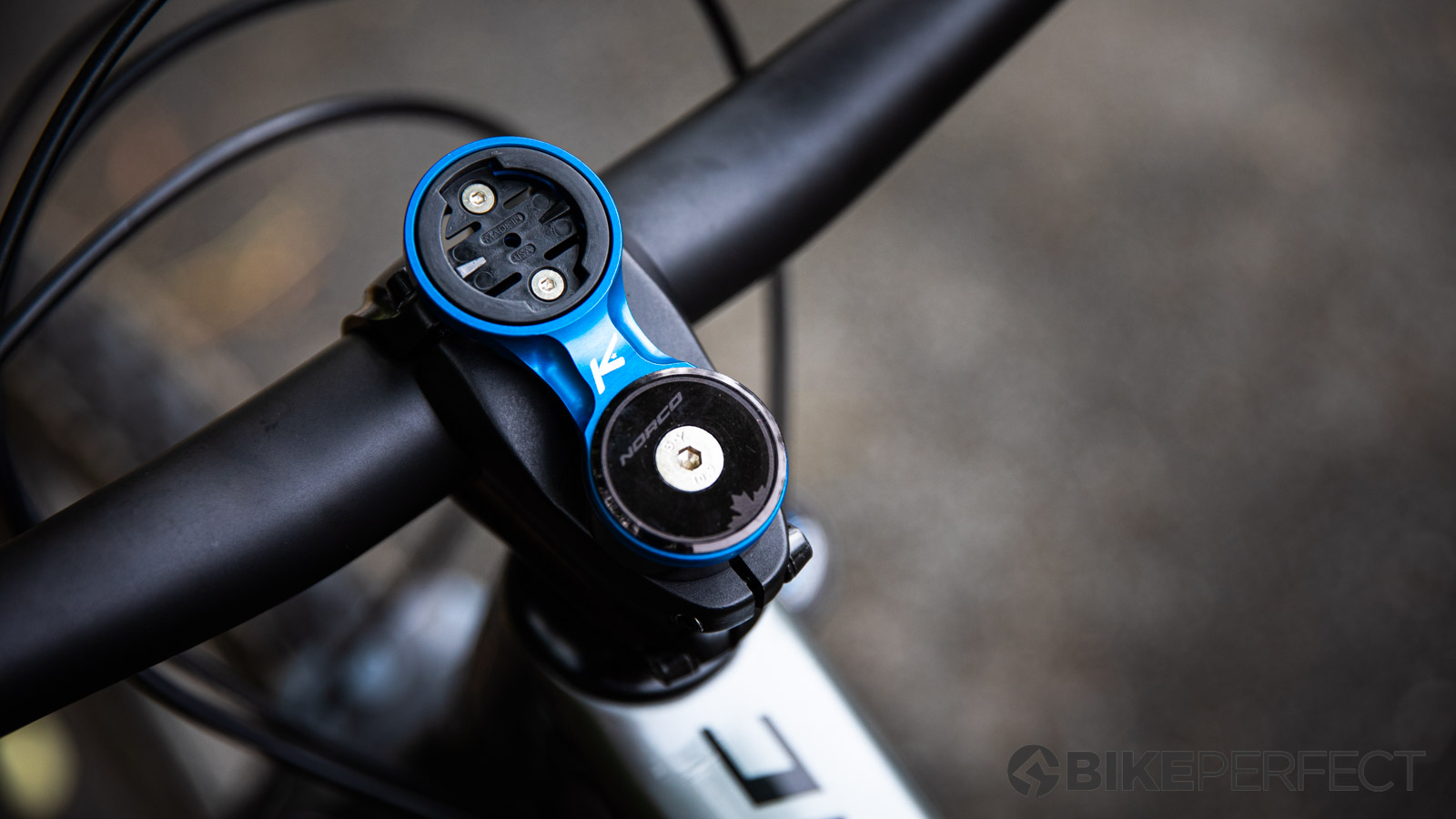
Without fail, every time I come through there, 1030 Plus’ crash detection is triggered, I will come through here at least twice on any given ride and have a 100-percent hit rate. I've also set it off on multiple occasions after hard braking. I wish Garmin would scrap this feature and instead offer support for something like the Specialized ANGi as Wahoo has, a crash sensor in my experience that does not have issues with false positives.
One area where Garmin has seemingly worked out many of its kinks is the firmware stability. Edge units are notorious for forgetting sensors, refusing to upload rides, freezing during updates, and through my testing period, I have experienced no such issues with the 1030 Plus.
Verdict
I was very much a proponent of smaller cycling computers for mountain biking because I was always terrified of subjecting them to crash damage, and I didn’t need to see how many miles I’d ridden in a larger font. I do like tracking my rides with a head unit from a training standpoint and the time crunch aspect; if you have an hour to ride, there is no guessing how long you have been out.
However, with the Trail Forks integration, a large format computer makes a little more sense. Whether you frequent trails that aren't well-signposted like I do, or are venturing into a new trail network for the first time, being able to see a full-color map that automatically appears when I stop makes the risk worth it in my eyes.
While the screen on the smaller Edge 830 is brighter with higher contrast, this still doesn’t outweigh how much easier trail maps are to read in a larger format. Given the 1030 Plus also fits into the Garmin ecosystem and can be paired up with an InReach, Varia Radar and lights, or piggyback on the HR sensor on most of the brand's watches, I think a head unit like the 1030 Plus is a solid addition to your kit.
However, priced at $599.99 / £519.99 / AU$999, I really think the price tag is a bit too heavy. It’s noticeably more expensive than the original Edge 1030 was when it was launched, and it is a better unit, but it's still a lot of cash for a cycling computer.
If you're regularly using the navigation feature at new or unfamiliar trail networks, or out on big backcountry adventures then the 1030 Plus is your ideal unit. If not, save yourself a few hundred bucks and buy an Edge 830.
Tech Specs: Garmin Edge 1030 Plus
- Price: $599.99 / £519.99 / AU$999
- Connectivity: ANT+, Bluetooth, WiFi
- Companion App: Yes
- Navigation: OpenStreet Map
- Claimed battery life: 24-hours
- Screen: 3.5in/89mm diagonal, full colour, touchscreen
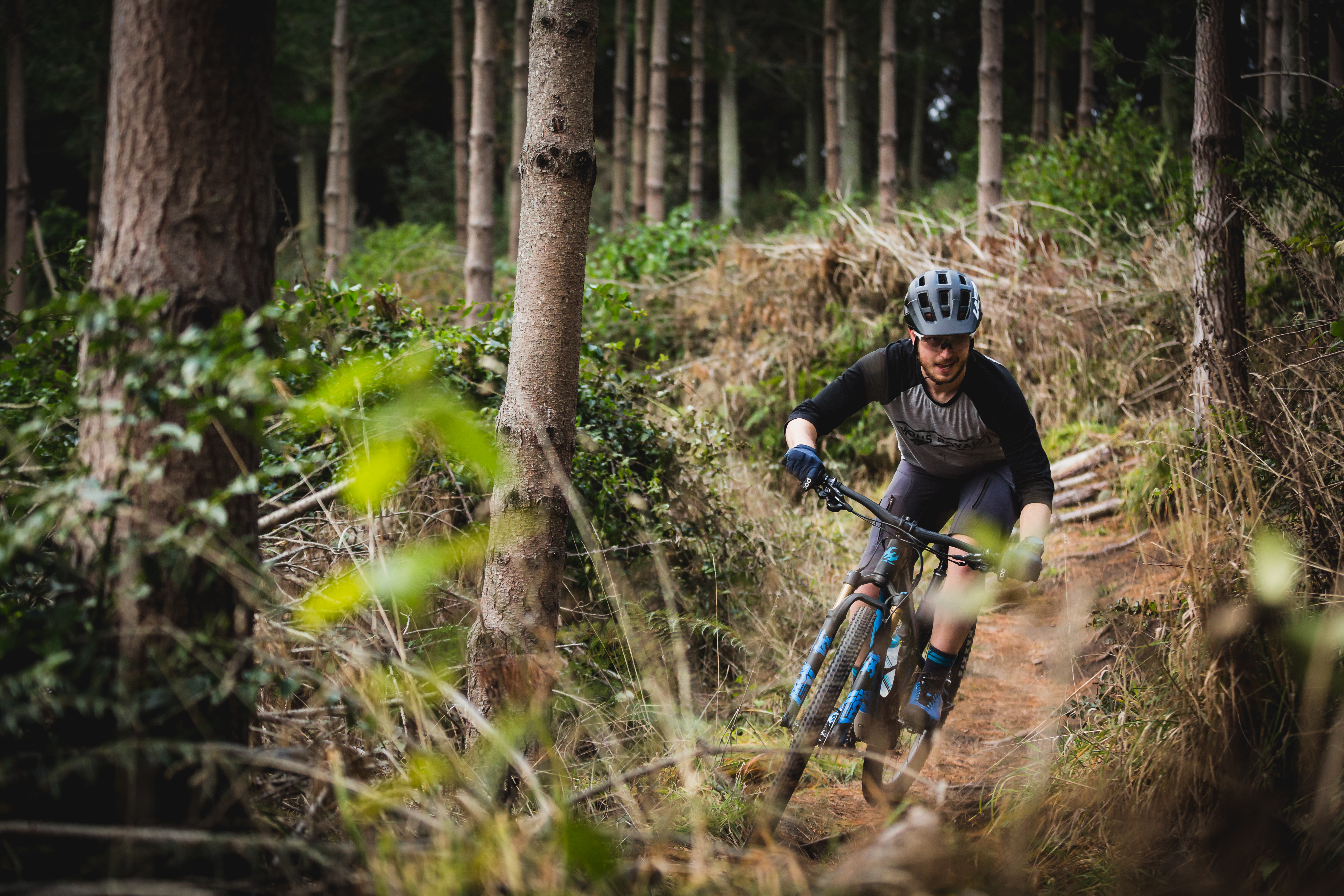
Born and bred in Colorado, and now based in Australia, Colin comes from a ski racing background and started riding as a way to stay fit through the summer months. His father, a former European pro, convinced him to join the Colorado State University collegiate cycling team, and he hasn't stopped since. It's not often he pins on a number nowadays, and you'll likely find him in search of flowy singletrack, gravel roads and hairpin corners. Colin has worked at Bikeradar and is a regular contributor to Australian Mountain Bike and Cyclist magazines.
Rides: BMC Team Machine SLR01, Trek Top Fuel 9, Ibis Ripley
